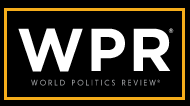Editor’s note: This article is the first in an ongoing WPR series about education policy in various countries around the world.
Last year, schools across Finland began implementing the country’s new National Curriculum Framework, which was first approved in 2014. Though the country, long praised for its school system, has seen test scores decline in recent years, the reforms show the Finnish government is more focused on other problems. In an email interview, Finnish educator, author and policy adviser Pasi Sahlberg explains what the changes are intended to achieve.
WPR: What are the biggest changes resulting from the adoption last year of the National Curriculum Framework, and what concerns were they responding to?
Pasi Sahlberg: Finland’s education system faces serious challenges, many of which are more worrisome than a drop in test scores. One of the most significant is an unsatisfactory level of student engagement in the classroom. Several national surveys have revealed that students think they don’t have a say in their own education and that much of what happens in school has little relevance for them. There is also a lack of meaningful collaboration among teachers. Finally, while there has been a positive shift toward recognizing students’ various talents, the main focus is still on traditional forms of intelligence that can be measured using short-answer tests. To combat this, Finnish schools have been actively looking for ways to impart interdisciplinary lessons that have more relevance to real-life phenomena.
Because local authorities have considerable autonomy in adopting their curricula, the new National Curriculum Framework functions more as a guide than as a strict set of rules. But it is intended to address these problems. To start, it places increased emphasis on student involvement in the learning process as well as students’ health and well-being. Irmeli Halinen, former head of curriculum development for Finland’s Board of Education, has said the framework was designed to transform schools into “learning communities,” foster a collaborative atmosphere that emphasizes “the joy of learning,” and promote student autonomy.
It also specifically requires that all schools engage students in learning that transcends traditional subject boundaries. For example, students might spend extended periods of time in units such as “Our Common Globe,” “Europe Now and Tomorrow” or “Technology and Us.” This has sometimes been described in Finland as “phenomenon-based” learning.
Finally, the framework places greater emphasis on using digital tools in education, though it remains to be seen how effective this will be. In my view, it is not enough to simply transfer material from books onto tablets or laptops. Schools need to teach children what technology can and cannot do by exposing them to tools that can help them better create and communicate while consuming media responsibly.
WPR: To what extent is Finland’s emphasis on“phenomenon-based” learning reproducible as a model elsewhere in the world, and what are some of the limitations to the approach’s applicability?
Sahlberg: First of all, let me say that the term “phenomenon-based” learning is misleading and perhaps unhelpful. Some reporting on this topic has even suggested that Finland was planning to do away with traditional subjects altogether. But the innovation is not nearly as dramatic as that. Instead, what Finland’s schools are embracing is essentially project-based learning, which has long been championed by reformers such as John Dewey. While Finnish educators may use different language to talk about their approach, and the details of its implementation might differ from how it’s implemented in other places, I often see similar approaches in action when I travel around the world. That being said, Finnish authorities are probably offering children more agency and a stronger voice in planning and assessing project-based learning units than their peers in other countries.
My opinion is that these are very complex and complicated pedagogical methods that require much more from teachers, students and school leaders than traditional, teacher-centered instruction methods. Project-based learning often requires collaboration and leadership skills and levels of empathy that are not always seen in typical classrooms. Finland’s strength lies in its well-educated teachers and school leaders, who are able to learn and make effective use of these methods more easily than those who lack proper professional training. It is important, however, that sufficient resources will be made available to help teachers make the best use of this new opportunity to change schools.
WPR: More broadly, what does the new approach reflect about Finland’s education philosophy and the role education plays in its economy and society?
Sahlberg: I predict Finnish schools will employ project-based learning approaches in a more systematic way going forward, and that the recent reforms will help make that possible. This reflects an interest on the part of Finnish educators to equip students to deal with changes in the workplace as well as the growth of new technologies. It also reflects Finland’s belief in the need for active citizenship. We believe democracy requires that all citizens take an active role in thinking about issues that affect our country, including protecting the environment and growing the economy. Young people need to be taught what democratic and civic processes look like and what each of us can do to improve our own lives and the lives of those around us.
Finland’s education system also reflects the importance Finland places on individual well-being. We believe healthy and happy individuals who have a sense of belonging to their communities and feel ownership of and responsibility for their own actions will ultimately be successful. What Finnish schools are trying to do is strike a balance between preparing children to join the workforce and using education as a vehicle to enhance their self-realization. That’s why there has not been much official concern with recent declines in Finland’s performance on standardized tests. Instead, Finland is focusing on making school a more attractive place for students and thus making students more motivated to succeed.

0 Comments